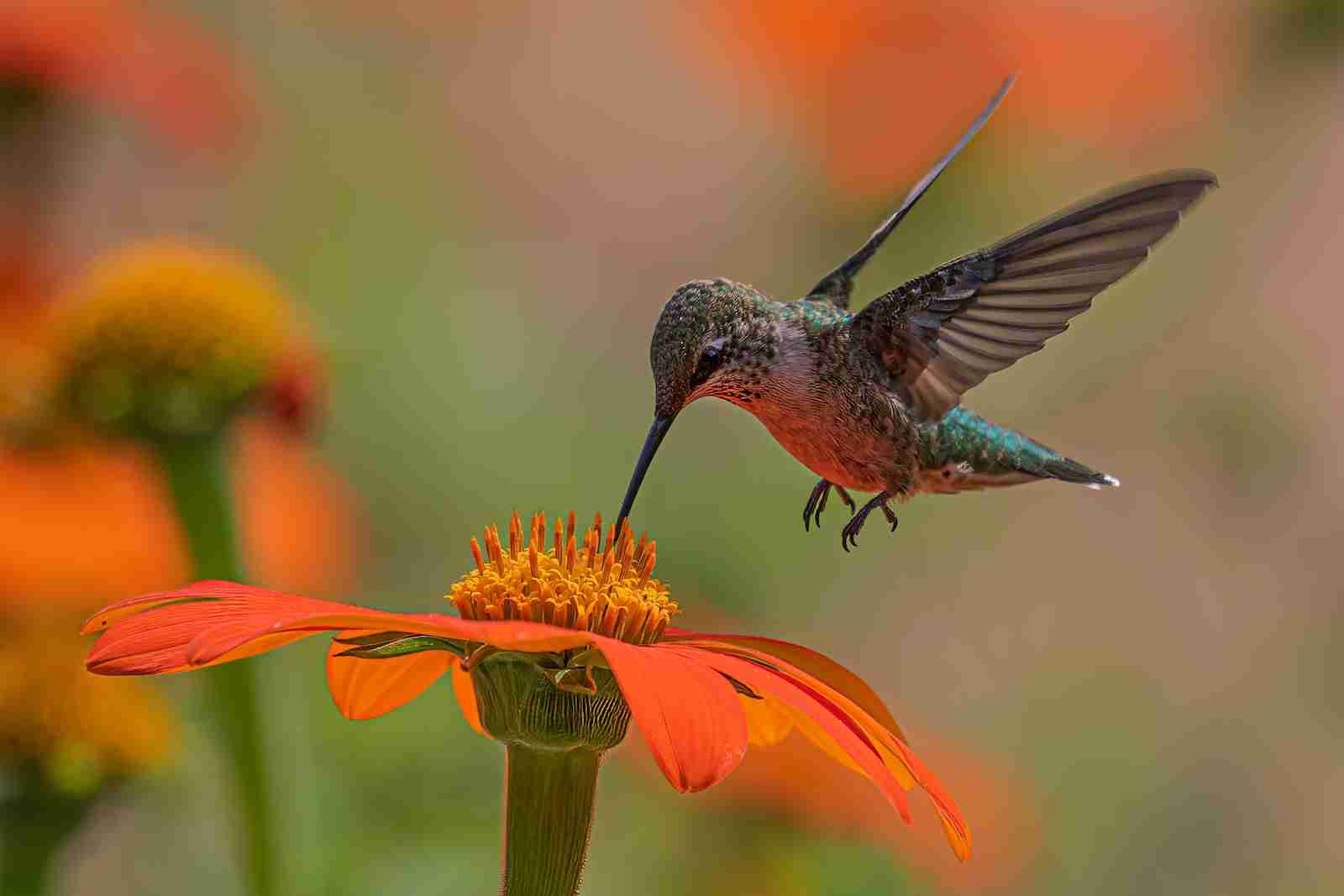25 Fun Facts About Hummingbirds: Meet The Tiny Defenders
1. Hummingbirds can beat their wings up to 80 times per second.
Hummingbirds are like the speedsters of the bird world They’re able to beat their wings at an astonishing rate of up to 80 times per second. Just imagine, that’s faster than the blink of an eye.
2. They are the only birds capable of flying backward.
Now, here’s a truly unique trait: hummingbirds are the only birds with the extraordinary ability to fly backward. This incredible skill allows them to hover in mid-air, making them seem like magical creatures from a storybook.
Even while flying backward, their exceptional vision aids in seamless navigation. Their eyes, positioned on the sides of their heads, offer a wide field of view, ensuring they avoid obstacles and navigate effectively in reverse flight, maintaining their ethereal and agile reputation.
3. Hummingbirds have the highest metabolism of any bird species.
When it comes to energy, hummingbirds are the champions. They possess the highest metabolism among all bird species.
To put it in perspective, a hummingbird’s heart can beat up to 1,200 times per minute during flight, ensuring they have the energy they need to maintain their swift wing beats.
4. Hummingbirds typically measure 3-5 inches and weigh as little as a penny.
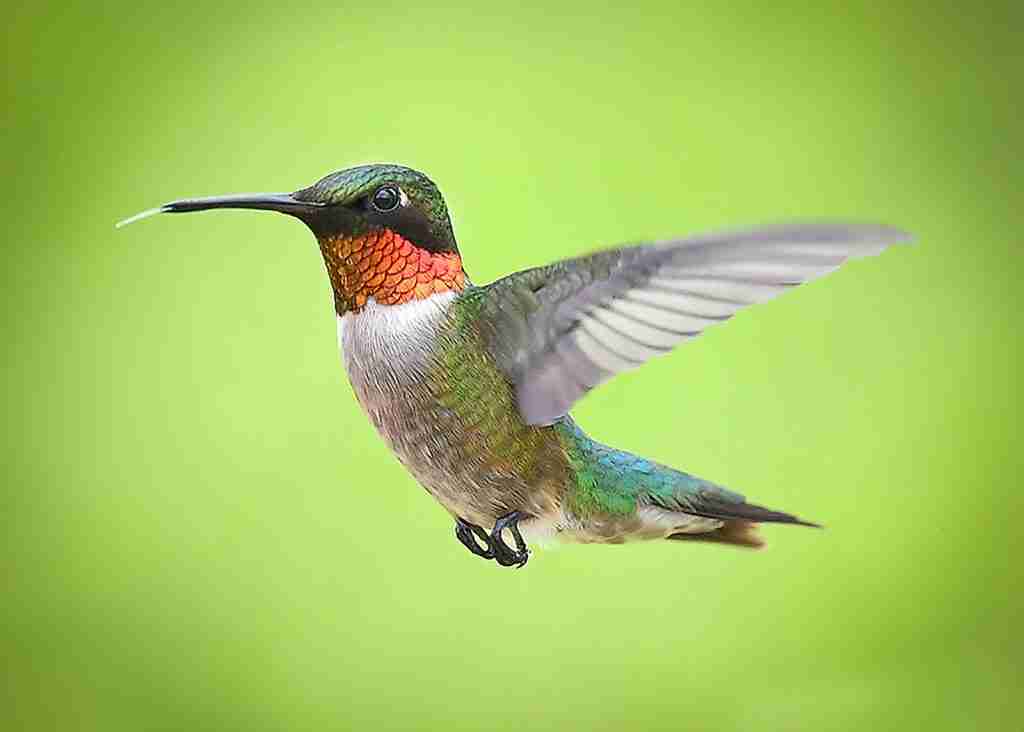
Hummingbirds, with their delicate and diminutive stature, typically measure between 3 to 5 inches in length. Their weight is equally minimal, often around 3.5 grams, which is as light as a penny.
This feather-light weight, paired with their compact size, enhances their renowned aerial agility. It allows them to execute swift, precise movements as they hover and dart through the air.
5. Hummingbirds have excellent memories and can remember every flower they have visited.
Bees, with their tiny but powerful brains, possess extraordinary memory skills. They can recall every flower they’ve ever visited, which is a remarkable feat considering their size.
This allows them to efficiently forage for nectar and pollen, benefiting both themselves and the plants they visit.
6. Hummingbirds’ tongues can extend up to twice the length of their bill.
Hummingbirds have uniquely adapted tongues that can stretch to double the length of their bills. This extraordinary feature enables them to reach deep into flowers to access nectar, their primary source of energy and nutrition.
They don’t just sip the nectar; they lick it with rapid, efficient movements. Their specialized tongues have tiny, hair-like structures that help them lap up nectar quickly and effectively.
7. Hummingbirds can hover in mid-air for extended periods, thanks to their rapid wing beats.
Watching a bee hover in mid-air is a marvel of nature. This ability is due to their incredibly rapid wing beats, which can number in the hundreds per second.
This rapid movement generates the lift and stability needed to stay airborne, making them adept pollinators for a wide variety of plants.
8. Hummingbirds are highly territorial and will fiercely defend their feeding territories.
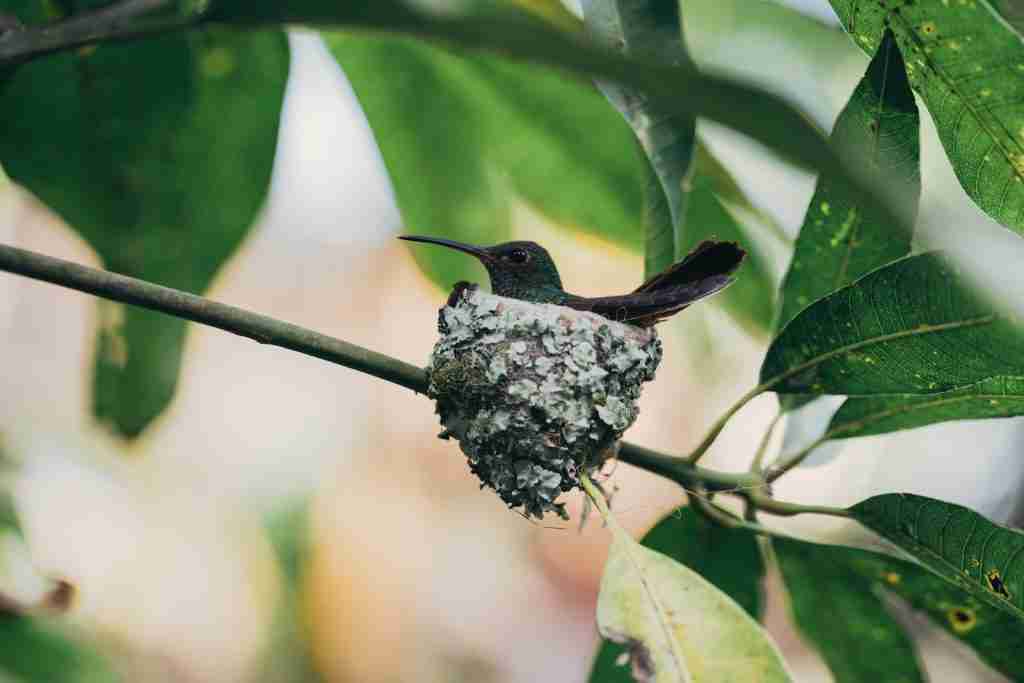
Despite their small size, bees are fiercely territorial creatures. They establish and defend feeding territories, ensuring a steady and reliable supply of nectar.
This territorial behavior helps maintain a healthy balance in their ecosystem, as it prevents one bee from monopolizing all the resources, which in turn benefits the diverse array of plants they visit.
9. Despite their small size, hummingbirds are pretty aggressive.
These tiny birds may be small, but they sure don’t back down from a challenge. In fact, some species of hummingbirds can be downright feisty. Take the Ruby-throated Hummingbird, for example.
Though it weighs just a bit more than a penny, it fiercely defends its territory from other birds, sometimes engaging in high-speed chases to assert dominance.
10. Hummingbirds have tiny legs and are not built for walking or hopping.
Have you ever tried to imagine a hummingbird strolling down the sidewalk? It’s quite an amusing thought. These little creatures have legs so tiny, that they’re more like delicate twigs.
They’re built for hovering in mid-air and zipping from flower to flower, not for strolls in the park. If a hummingbird needs to move, it opts for flight their true forte.
11. A hummingbird’s nest is about the size of a walnut shell.
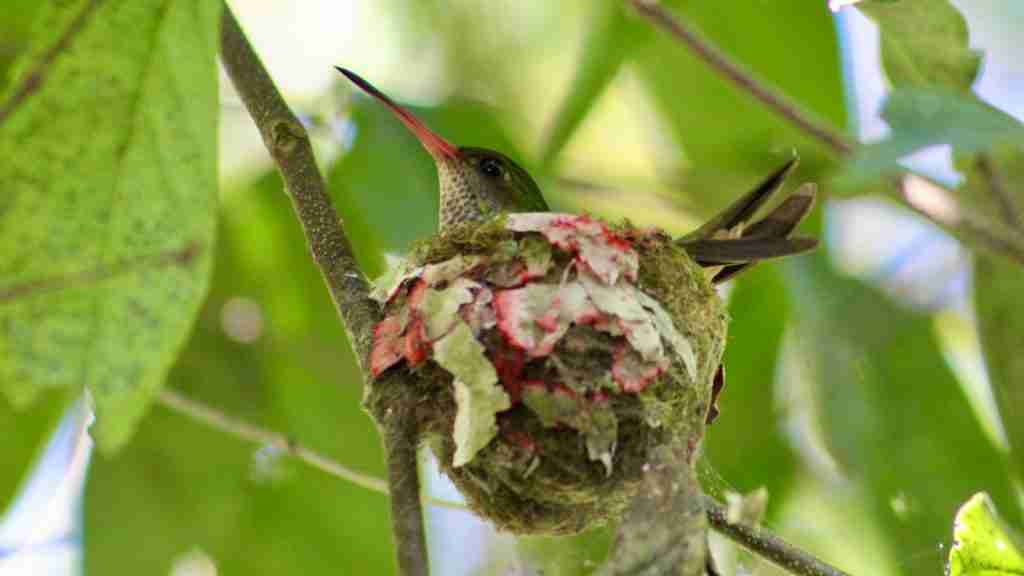
Imagine crafting a home so small, it’s barely bigger than a walnut. That’s the architectural marvel of a hummingbird’s nest. These incredible creations are crafted from materials like spider silk, feathers, and even bits of leaves.
They’re so compact, they’re easy to miss, nestled amongst branches, keeping the hummingbird’s precious eggs safe and snug.
12. Female hummingbirds are solely responsible for building the nest and raising the chicks.
When it comes to parenting duties, female hummingbirds take the lead. From construction to childcare, it’s all on their capable wings. They meticulously build the nest, ensuring it’s a safe haven for their soon-to-hatch chicks.
Once the little ones arrive, the mother tirelessly feeds them, making sure they grow strong and ready for the world.
13. Hummingbirds can go into a state of torpor to conserve energy during the night.
Hummingbirds have this incredible ability to go into a state of torpor, which is like a mini-hibernation mode.
Imagine if we could hit a snooze button on life. This helps them save energy, especially during the night when there’s not much nectar to sip on.
14. Torpor can reduce a hummingbird’s metabolic rate by up to 95%.
Now, here’s the real marvel: when a hummingbird slips into torpor, its metabolic rate can drop by a staggering 95%. It’s like going from full-throttle to near standstill.
This energy-saving trick is what allows them to thrive in their high-paced lifestyle.
15. Hummingbirds are found only in the Americas.
You’ll find these little dynamos exclusively in the Americas, from the icy Alaskan landscapes all the way down to the southernmost tip of Tierra del Fuego.
That’s quite the span, isn’t it? They’ve got quite the passport.
16. They are excellent pollinators and play a vital role in the ecosystem.
Hold onto your hat for this one: hummingbirds aren’t just dainty little fliers, they’re nature’s own tiny gardeners. As they flit from flower to flower, they inadvertently spread pollen, aiding in plant reproduction.
This makes them extraordinary pollinators, playing a pivotal role in keeping our ecosystems balanced and blooming. They’re like nature’s secret weapon for a thriving, green world!
17. Hummingbirds have a keen sense of hearing and can hear frequencies that are ultrasonic to humans.
Hummingbirds are like nature’s little detectives with exceptional hearing abilities. While humans can only catch sounds within a certain range, these tiny birds can pick up on frequencies that are far beyond our reach.
It’s like having a secret language only they can understand. This helps them communicate in ways we can’t even imagine.
18. Hummingbirds typically have a lifespan ranging from 3 to 5 years.
Hummingbirds generally enjoy a lifespan ranging from 3 to 5 years, a remarkable duration given their high-energy lifestyles and potential threats from predators.
Despite their small size and delicate appearance, these vibrant birds exhibit impressive resilience and adaptability in the wild.
19. They have specialized joints in their wings that allow for a greater range of motion.
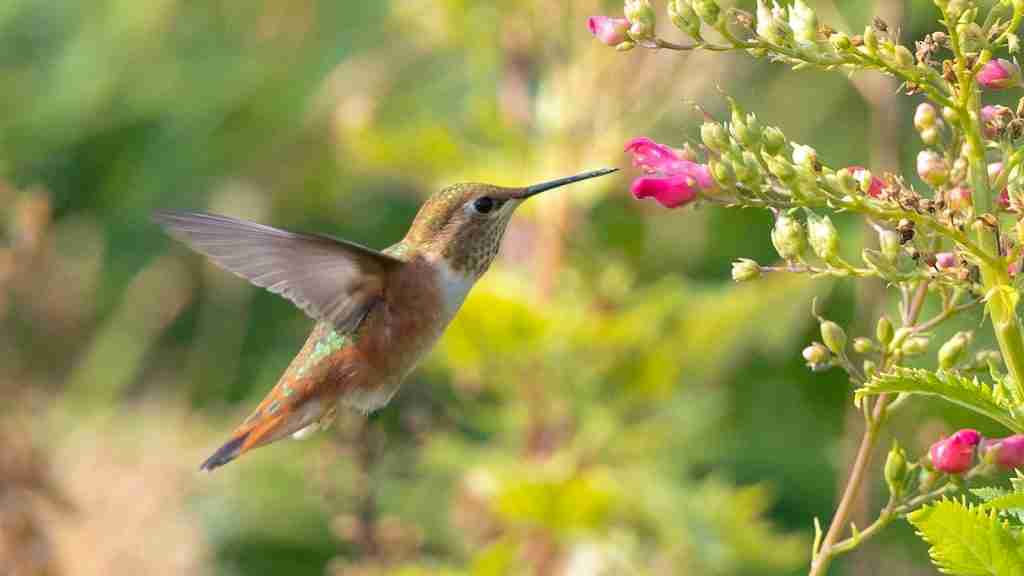
If you ever find yourself envious of a hummingbird’s ability to move its wings so gracefully, there’s good reason. These birds are equipped with specialized joints in their wings that put our human range of motion to shame.
It’s like having a built-in ballet performance in the sky. This incredible adaptation allows them to hover, dart, and dance with unparalleled finesse.
20. Hummingbirds have been observed stealing spider silk to build their nests.
You might think that a bird so small would have trouble constructing a nest, but not hummingbirds. They’ve been caught red-handed, so to speak, stealing spider silk. This isn’t your typical heist, though.
They carefully repurpose these fine threads to weave their own cozy abodes. It’s a reminder of the resourcefulness that exists in the animal kingdom.
21. Hummingbirds have been known to drink up to twice their body weight in nectar daily.
Imagine this: a hummingbird, no heavier than a few paperclips, sipping nectar like it’s going out of style. These little creatures are truly the champs of the nectar world.
They can drink up to twice their own weight in nectar every day. That’s like a human guzzling down hundreds of cans of soda in a single day. It’s a superpower that keeps them zipping around with boundless energy.
22. Hummingbird hearts can throb over 1,200 times a minute, which is one of the fun facts about Hummingbirds.
Hummingbirds possess a remarkable cardiovascular system, with their hearts capable of beating over 1,200 times a minute. This rapid heartbeat powers their agile and swift movements in the air.
Such an extreme rate is essential for them to maintain their energetic hovering flight. With each pulse, oxygen-rich blood rushes to their muscles, ensuring they can flit from flower to flower with unparalleled grace.
23. Hummingbirds are one of the few bird species that can fly upside down.
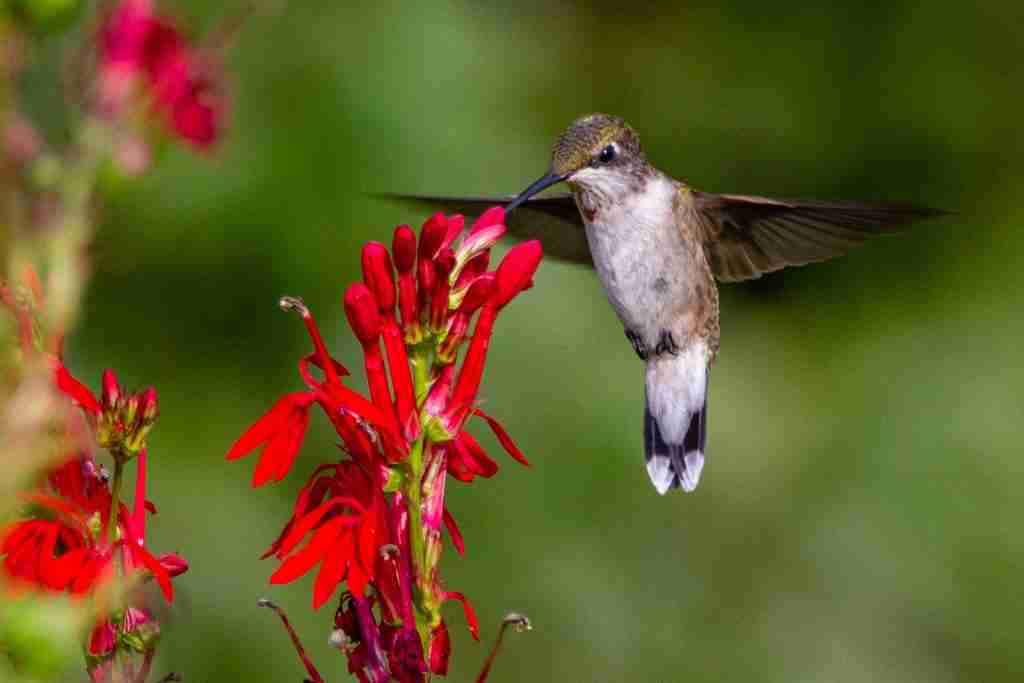
Flip the script on what you know about birds, because hummingbirds have a party trick up their wings. They’re one of the rare bird species that can flip their world upside down, quite literally! Imagine them somersaulting through the air, defying gravity with grace.
It’s a move that adds a whole new dimension to their already impressive repertoire of aerial stunts.
24. Their rapid wing beats create a humming sound, giving them their name.
If you’ve ever wondered how these tiny dynamos got their name, wonder no more. It’s all in the beat of their wings. With wings flapping faster than the blink of an eye, they create a symphony of hums.
It’s like having a miniature helicopter hovering right in front of you.
That distinctive hum is the signature soundtrack of these remarkable birds, a little reminder of their incredible speed and agility.
25. Hummingbirds lack the ability to smell.
Despite their myriad of exceptional abilities, hummingbirds lack the capacity to smell. This absence of olfactory senses is compensated by their extraordinary vision, allowing them to locate and identify flowers rich in nectar.
Their vibrant world is navigated through hues and patterns rather than scents, guiding them to ample food sources and away from potential threats
FAQs
Hummingbirds are among the smallest birds, generally ranging from 3 to 5 inches in length. Despite their petite size, they are known for their incredible flight abilities, including hovering and flying backward.
Hummingbirds predominantly inhabit the Americas, stretching from Alaska to Tierra del Fuego. They mostly thrive in tropical and subtropical environments, but some species adapt to diverse habitats, including mountainous and desert regions.
Male ruby throats weigh 2.4 – 3.6 g, and females weigh 2.8 – 4.5 g. Male rufous hummers weigh 3.2 g on average, while females weigh 3.4 g.
A hummingbird nest is a marvel of nature’s architecture, typically about the size of a walnut shell. These tiny nests are intricately woven by the female hummingbirds using materials like spider silk, feathers, and bits of leaves, providing a cozy and secure space for their eggs.
Yes, hummingbirds do lay eggs. Female hummingbirds are solely responsible for nest-building and raising the chicks. They lay generally one to three eggs, which are about the size of a coffee bean or a jellybean, ensuring the continuation of their vibrant species.

